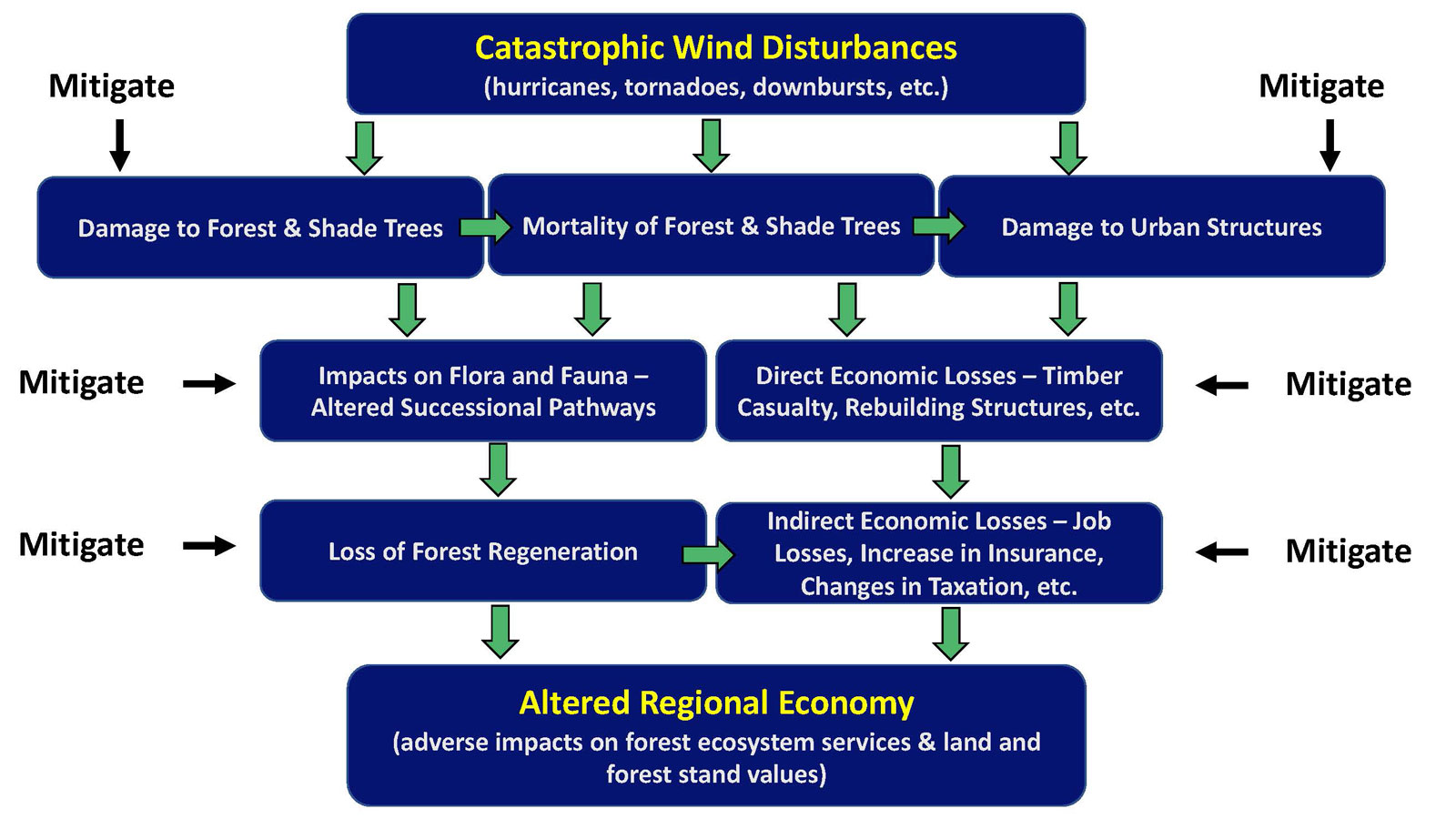Teaming for Interdisciplinary Research Pre-Seed Program
Catastrophic Wind Disturbances in Natural and Urban Forests – Patterns, Processes, Impacts, and Management

Catastrophic Wind Disturbances in Natural and Urban Forests – Patterns, Processes, Impacts, and Management
Natural disturbances can cause significant economic and ecological damage to natural and planted forested and urban areas. Types of natural disturbances include wildfires, windthrows, flooding, and drought. In the last decade, southeastern U.S. has exceptionally been subjected to large-scale and catastrophic wind disturbance events such as hurricanes (e.g., Irma and Michael), tornadoes, and downbursts along with flooding in many areas. These wind disturbance events on millions of hectares have caused tree mortality through snapping, uprooting, and breaking of trees. Billions of dollars of damage on timberland and urban structures have been reported across many states, along with cascading impacts on forest structure, composition, and processes. Such catastrophic windstorms are expected to increase in frequency and intensity under global climatic changes. Hence, synthetic studies are needed to mitigate many aspects of windstorms including ecologically e.g., forest integrity with links to altered successional pathways of animal and plant species and economically e.g., damage to forest plantations and urban structures, losses in replanting and rebuilding structures, and potential changes to taxation and insurance.
We have created a diverse research and outreach team to jointly tackle each of these mitigation aspects to minimize the adverse impacts of catastrophic windstorms. The team members include Kamal Gandhi (PI, forest entomology); David Dickens (silviculture – outreach); Robert Hoyt (insurance); Yanshu Li (taxation – outreach); Elizabeth McCarty (forest entomology – outreach); Cristian Montes (forest modeling); Chris Peterson (plant biology); Caterina Villari (forest pathology); and Nina Wurzburger (soil biogeochemistry). These nine faculty are from four different units on campus, and includes outreach faculty who will assist with providing results to the stakeholders and likely legislature more effectively. Some of the research questions to tackle are: 1) what happens to ecosystem services (e.g., biodiversity, nutrient, and water cycling) after a windstorm event?; 2) would post-windstorm management activities (e.g., burning and salvaging) create different successional and regeneration pathways than unmanaged areas?; 3) what are the social and economic impacts of windstorm events in both urban and suburban forests; and 4) whether and how can we create future forests that are more resilient and adapted to catastrophic wind disturbances? Using preliminary data from these projects, we will apply to funding from various agencies such as NSF, DOE, and USDA in the future. Results from the project are expected to enhance forest regeneration and assist with alleviating economic burdens on local communities from such large-scale natural disturbances.
Team Lead
Kamal Gandhi
Warnell School of Forestry & Natural Resources
kjgandhi@uga.edu
Team Members
David Dickens
Warnell School of Forestry & Natural Resources
Robert Hoyt
Terry College of Business
Yanshu Li
Warnell School of Forestry & Natural Resources
Elizabeth McCarty
Warnell School of Forestry & Natural Resources
Cristian Montes
Warnell School of Forestry & Natural Resources
Chris Peterson
Department of Plant Biology
Caterina Villari
Warnell School of Forestry & Natural Resources
Nina Wurzburger
Odum School of Ecology
